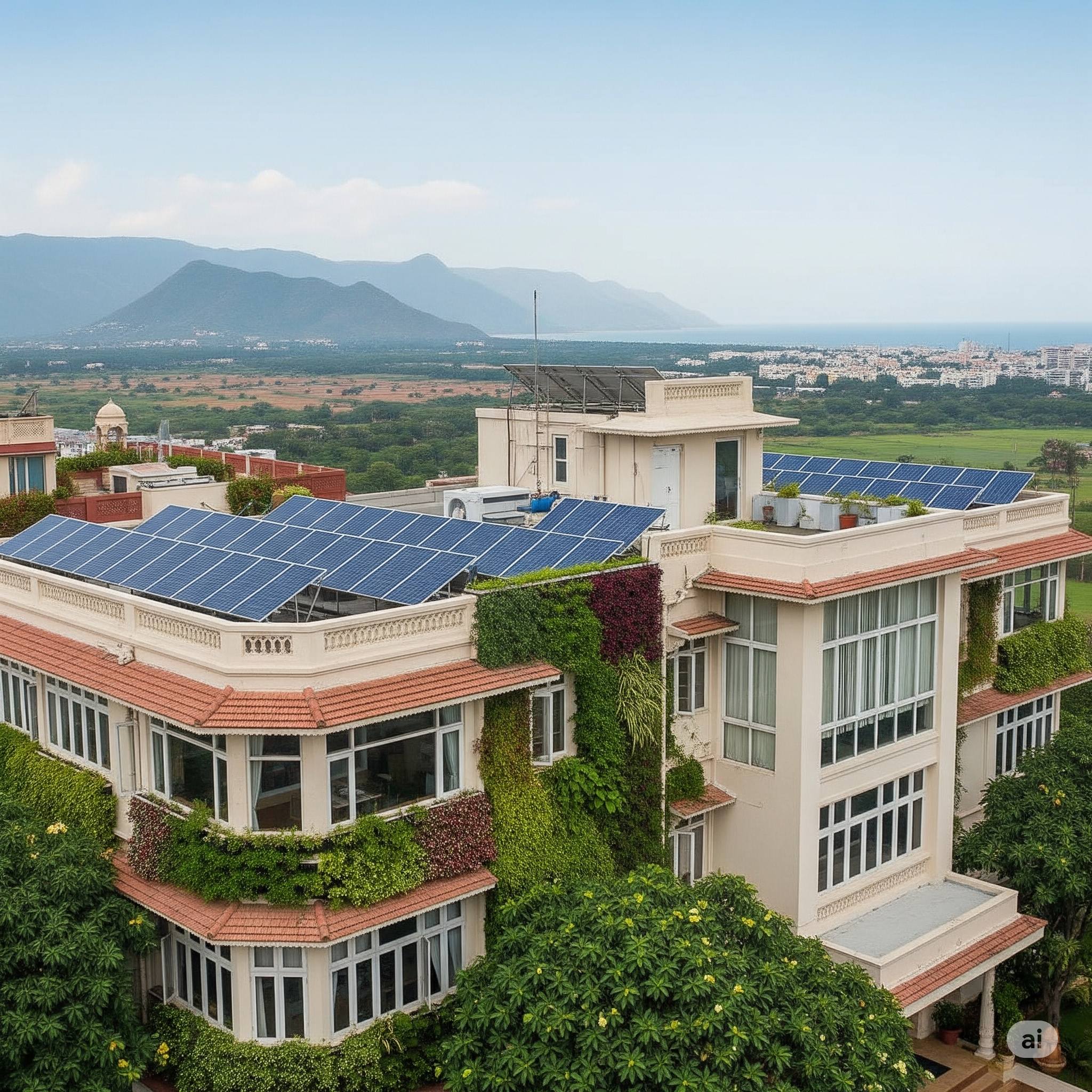Hello, readers! As someone deeply entrenched in the ever-evolving landscape of the Indian construction industry, I’ve witnessed a significant and heartening shift in recent years: the growing embrace of sustainable construction practices in India. Gone are the days when building solely focused on speed and cost; today, there’s a palpable understanding of our responsibility towards the environment and future generations.
This isn’t just a fleeting trend; it’s a fundamental change in how we approach design, material selection, and the entire construction process across the diverse terrains of our nation. From the bustling metropolises to the serene rural landscapes, a conscious effort is underway to build greener and more responsibly. Let’s delve into this exciting transformation.

The Urgency for Sustainable Building in India
India, with its rapidly growing economy and urban centers, faces unique environmental challenges. Traditional construction methods often contribute to significant carbon emissions, resource depletion, and waste generation. The need for green building India initiatives is more critical than ever to mitigate these impacts and create healthier, more resilient communities.
The government, along with industry leaders and conscious consumers, is recognizing this urgency. Initiatives promoting energy-efficient buildings, water conservation, and the use of eco-friendly materials are gaining momentum. This collective push is fostering a new era of sustainable construction practices throughout the country.
Key Pillars of Sustainable Construction in India
The move towards sustainability in Indian construction rests on several key pillars:
- Eco-Friendly Materials: A significant aspect is the increasing adoption of green building materials such as fly ash bricks, recycled concrete, bamboo, and locally sourced natural materials. These alternatives often have a lower embodied energy and reduce the environmental footprint of construction.
- Energy Efficiency: Designing buildings that minimize energy consumption is crucial. This includes incorporating passive design principles for natural lighting and ventilation, using energy-efficient fixtures and appliances, and investing in renewable energy sources like solar power.
- Water Conservation: Water scarcity is a growing concern in many parts of India. Sustainable construction emphasizes rainwater harvesting, water-efficient plumbing fixtures, and wastewater treatment to reduce water usage.
- Waste Management: The construction industry generates substantial waste. Implementing effective waste management practices, including reducing waste at the source, reusing materials, and recycling construction and demolition debris, is vital for a circular economy.
- Green Building Certifications: Organizations like the Indian Green Building Council (IGBC) and GRIHA (Green Rating for Integrated Habitat Assessment) play a crucial role in promoting and certifying sustainable construction practices across various project types, from residential to commercial and industrial.
Indoor Environmental Quality (IEQ)
A green building is also a healthy building:
Optimized Ventilation: Ensuring ample fresh air circulation to prevent stale air and pollutant buildup.
Thermal Comfort: Designing for stable indoor temperatures through passive and active strategies.
Acoustic Comfort: Mitigating noise pollution from outside and within the building.
Maximizing Natural Light: Reducing the need for artificial lighting, enhancing occupant mood and productivity.
Using Non-Toxic Materials: Selecting materials that do not off-gas harmful chemicals, ensuring healthy indoor environments.
Challenges & Opportunities for Green Building in India
While the path is clear, challenges persist. Initial cost perception, limited awareness, and establishing robust green supply chains are hurdles. However, these are rapidly becoming opportunities. Government incentives, increasing consumer demand for healthy homes, and advancements in green technologies are accelerating adoption. As India moves towards its Net Zero targets, the demand for net zero construction India will only grow, opening vast opportunities for pioneering companies.
Embracing Sustainability Across India: A Nationwide Movement
What’s particularly encouraging is the widespread adoption of these practices across different regions of India. Whether it’s the energy-efficient homes being built in the northern plains, the water-conscious designs in the arid west, or the use of local materials in the hilly terrains of the east, the spirit of sustainability is taking root.
Our organization, with its commitment to responsible building across diverse locations in India, witnesses this firsthand. We strive to integrate sustainable construction practices into all our projects, understanding that it’s not just about constructing structures, but about building a better future for all.
The Path Forward: Challenges and Opportunities
While significant progress has been made, the journey towards a fully sustainable construction sector in India is ongoing. Challenges such as initial cost perceptions, lack of awareness, and the need for standardized green building codes across all states still exist.
However, these challenges also present immense opportunities for innovation, collaboration, and growth. By embracing new technologies, fostering skill development in green construction techniques, and creating greater awareness among stakeholders, India can truly emerge as a leader in sustainable building practices.
A1 Builders Commitment to Sustainable Construction
At A1 Builders, sustainability isn’t just a buzzword; it’s ingrained in our philosophy. We are committed to leading the charge in eco-friendly construction India. Our approach integrates:
Certified Professionals: Our team includes IGBC Accredited Professionals dedicated to green building principles.
Innovative Design: We leverage passive design strategies and cutting-edge technologies to deliver energy efficient buildings India.
Responsible Sourcing: We prioritize sustainable building materials India, supporting local economies and reducing environmental impact.
Project Expertise: From [mention a specific type of sustainable project, e.g., low-carbon residential complexes, LEED-certified commercial spaces] to [another type], we have a proven track record of delivering projects that meet stringent Indian green building standards.
We believe that every structure we build is an opportunity to contribute positively to our environment and communities.
Conclusion: Building a Sustainable India, Brick by Greener Brick
The rise of sustainable construction practices in the Indian building sector is a testament to our collective commitment to a healthier planet. It’s a journey that requires continuous learning, adaptation, and collaboration. As we move forward, let’s continue to prioritize green building India initiatives, ensuring that our construction endeavors not only meet the needs of today but also safeguard the resources and well-being of generations to come.
What are your thoughts on the future of sustainable construction in India? Share your insights and experiences in the comments below!
